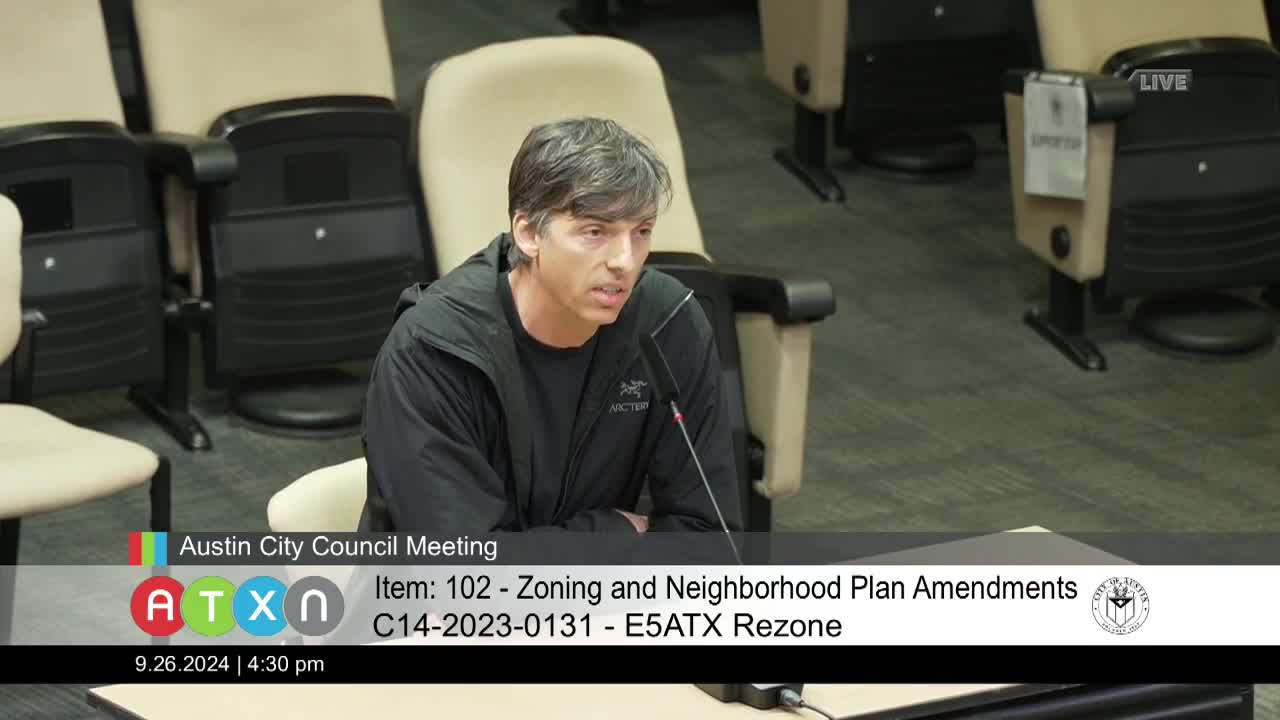Neighbors Rally Against Zoning Change Threatening Community Stability
September 26, 2024 | Austin, Travis County, Texas
This article was created by AI summarizing key points discussed. AI makes mistakes, so for full details and context, please refer to the video of the full meeting. Please report any errors so we can fix them. Report an error »

During a recent government meeting, community members voiced strong concerns regarding proposed zoning changes in the Bolden Creek neighborhood of Austin, Texas. Residents expressed fears that unregulated development could jeopardize the stability of their homes and disrupt the character of their community.
Jody Zamel, chair of the Bolden Creek Neighborhood Association, highlighted the historical significance of a nearly century-old stone building currently housing the Herb Bar, a low-impact retail business. Zamel and other residents urged the council to impose conditional use restrictions on any future restaurant or bar operations at the site, arguing that such establishments would negatively impact the surrounding single-family homes. They requested that any new restaurant use be limited in size and that a vegetative buffer and solid fence be established to protect residential properties.
Harry Cabluk, a neighbor, echoed these sentiments, expressing his discontent with the potential for increased traffic and noise from a bar next door. He criticized the property owner for changing plans frequently and not being transparent with the community. William Weaver and Gerald Williams also stressed the importance of maintaining the neighborhood's low-impact character, urging the council to consider the community's long-standing opposition to high-impact developments.
In a separate discussion, residents from the Oak Hill area raised alarms about a proposed development that could add 660 apartment units. They cited concerns over inadequate infrastructure, increased traffic on rural roads, and the risk of wildfires due to the area's vegetation. Community members called for a comprehensive master plan to guide future developments rather than piecemeal zoning changes, emphasizing the need for road improvements and emergency signals to ensure safety.
The meeting underscored a growing tension between community preservation and the pressures of urban development, with residents advocating for more stringent regulations to protect their neighborhoods from potential overdevelopment and its associated impacts.
Jody Zamel, chair of the Bolden Creek Neighborhood Association, highlighted the historical significance of a nearly century-old stone building currently housing the Herb Bar, a low-impact retail business. Zamel and other residents urged the council to impose conditional use restrictions on any future restaurant or bar operations at the site, arguing that such establishments would negatively impact the surrounding single-family homes. They requested that any new restaurant use be limited in size and that a vegetative buffer and solid fence be established to protect residential properties.
Harry Cabluk, a neighbor, echoed these sentiments, expressing his discontent with the potential for increased traffic and noise from a bar next door. He criticized the property owner for changing plans frequently and not being transparent with the community. William Weaver and Gerald Williams also stressed the importance of maintaining the neighborhood's low-impact character, urging the council to consider the community's long-standing opposition to high-impact developments.
In a separate discussion, residents from the Oak Hill area raised alarms about a proposed development that could add 660 apartment units. They cited concerns over inadequate infrastructure, increased traffic on rural roads, and the risk of wildfires due to the area's vegetation. Community members called for a comprehensive master plan to guide future developments rather than piecemeal zoning changes, emphasizing the need for road improvements and emergency signals to ensure safety.
The meeting underscored a growing tension between community preservation and the pressures of urban development, with residents advocating for more stringent regulations to protect their neighborhoods from potential overdevelopment and its associated impacts.
View full meeting
This article is based on a recent meeting—watch the full video and explore the complete transcript for deeper insights into the discussion.
View full meeting
